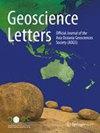Application of a weighted ensemble forecasting method based on online learning in subseasonal forecast in the South China
IF 4.3
3区 地球科学
Q1 GEOSCIENCES, MULTIDISCIPLINARY
引用次数: 0
Abstract
Under the proposal of “seamless forecasting”, it has become a key problem for meteorologists to improve the skills of subseasonal forecasts. Since the launch of the subseasonal-to-seasonal (S2S) plan by WMO, the precision of model predictions has been further developed. However, when we are focusing on the practical applications of models in the South China (SC) in recent years, we found that large disagreements appear between forecast members. Some of the members predicted well in this area, while others are not satisfactory. To improve the accuracy of subseasonal forecast in the SC, new methods making full use of different forecast models must be proposed. In this passage, we introduced a weighted ensemble forecasting method based on online learning (OL) to overcome this difficulty. As the state-of-the-art forecast models in the world, three models from China Meteorological Administration, European Centre for Medium-Range Weather Forecasts and National Centers for Environmental Prediction provided by the S2S prediction dataset are used as ensemble members, and an ensemble weight is trained through the aforementioned OL model for the predictions of temperature and precipitation in subseasonal timescale in the SC. The results show that the forecast results produced under the OL method are better than the original model predictions. Compared with the three model ensemble results, the weighted ensemble model has a good ability in depicting the temperature and precipitation in the SC. Furthermore, we also compared this strategy against the climatology predictions and found out that the weighted ensemble model is superior in 10–30 days. Thus, the weighted ensemble method trained thorough OL may shed light on improving the skill of subseasonal forecasts.基于在线学习的加权集合预报方法在华南副季节预报中的应用
在 "无缝预报 "的建议下,如何提高副季节预报的技能已成为气象学家面临的关键问题。自世界气象组织(WMO)推出 "从副季到季"(S2S)计划以来,模式预报的精度得到了进一步提高。然而,当我们关注近年来模式在华南地区的实际应用时,我们发现预报成员之间出现了较大的分歧。有些成员在这一地区的预报效果很好,而有些则不尽如人意。为了提高华南副季节预报的精度,必须提出充分利用不同预报模式的新方法。本文介绍了一种基于在线学习(OL)的加权集合预报方法,以克服这一困难。以S2S预报数据集提供的中国气象局、欧洲中期天气预报中心和美国国家环境预报中心的三个预报模式作为世界上最先进的预报模式,通过上述OL模式训练出一个集合权重,用于预报南极洲副季节尺度的气温和降水。结果表明,OL 方法产生的预报结果优于原始模式的预报结果。与三种模式的集合结果相比,加权集合模式对南极洲气温和降水的描述能力更强。此外,我们还将这一策略与气候学预测结果进行了比较,发现加权集合模式在 10-30 天内的预测结果更优。因此,经过 OL 训练的加权集合方法可能有助于提高副季节预报的技能。
本文章由计算机程序翻译,如有差异,请以英文原文为准。
求助全文
约1分钟内获得全文
求助全文
来源期刊

Geoscience Letters
Earth and Planetary Sciences-General Earth and Planetary Sciences
CiteScore
4.90
自引率
2.50%
发文量
42
审稿时长
25 weeks
期刊介绍:
Geoscience Letters is the official journal of the Asia Oceania Geosciences Society, and a fully open access journal published under the SpringerOpen brand. The journal publishes original, innovative and timely research letter articles and concise reviews on studies of the Earth and its environment, the planetary and space sciences. Contributions reflect the eight scientific sections of the AOGS: Atmospheric Sciences, Biogeosciences, Hydrological Sciences, Interdisciplinary Geosciences, Ocean Sciences, Planetary Sciences, Solar and Terrestrial Sciences, and Solid Earth Sciences. Geoscience Letters focuses on cutting-edge fundamental and applied research in the broad field of the geosciences, including the applications of geoscience research to societal problems. This journal is Open Access, providing rapid electronic publication of high-quality, peer-reviewed scientific contributions.
 求助内容:
求助内容: 应助结果提醒方式:
应助结果提醒方式:


